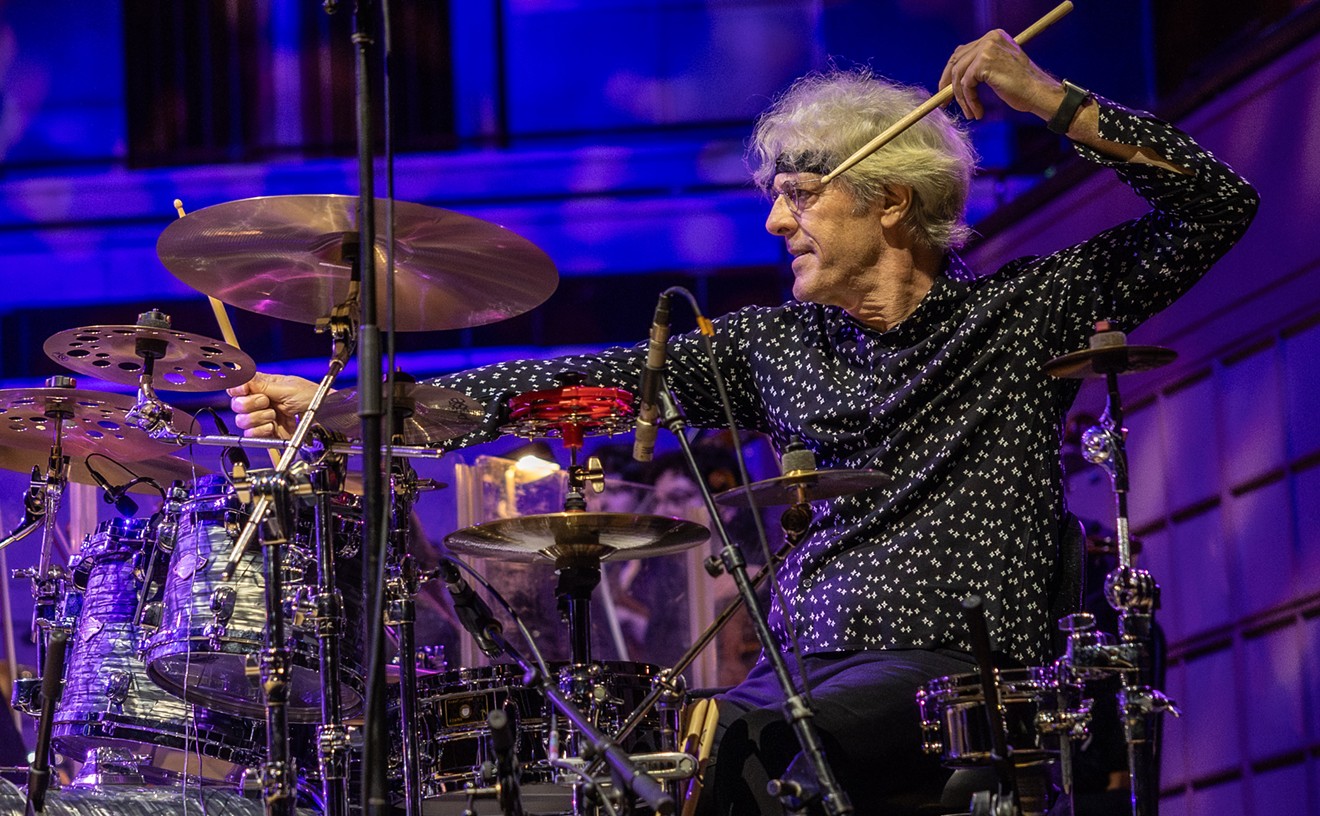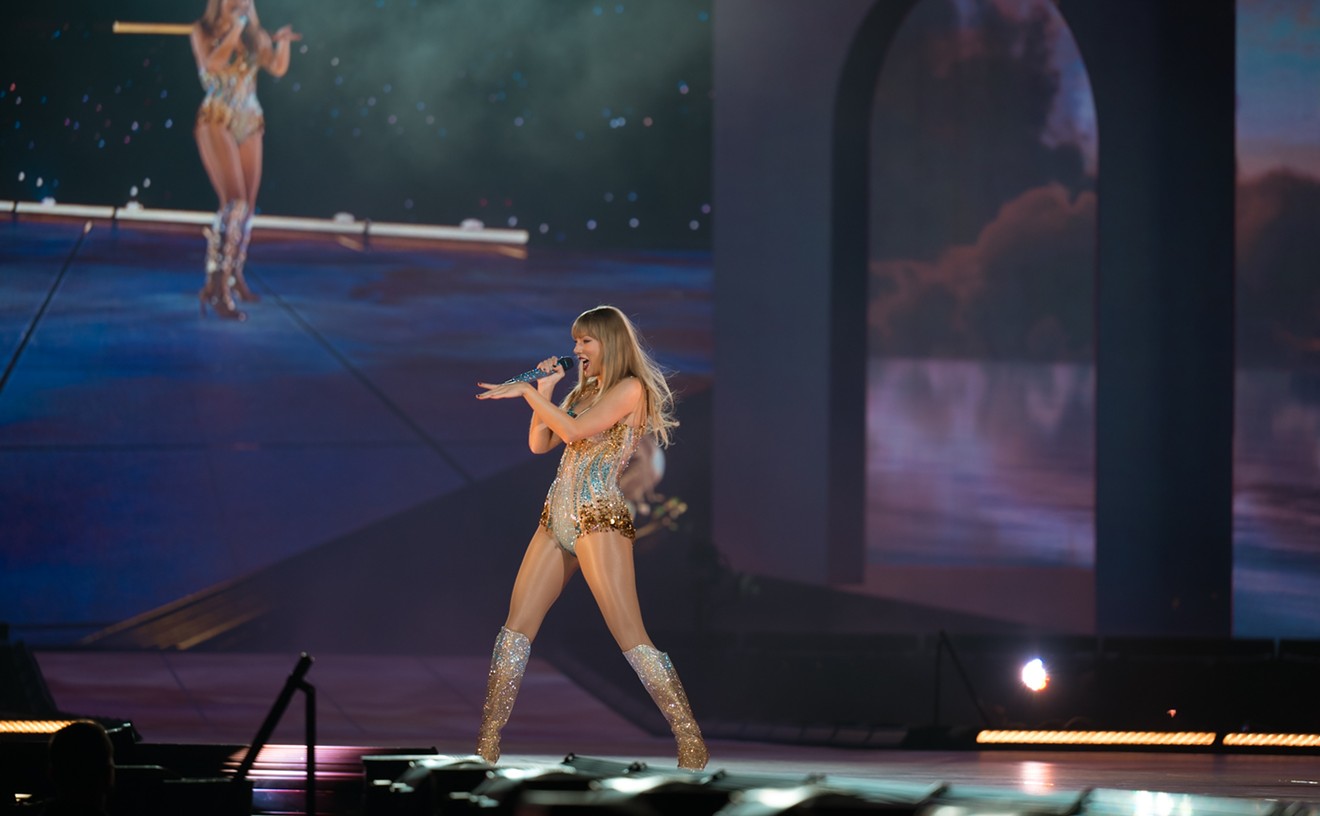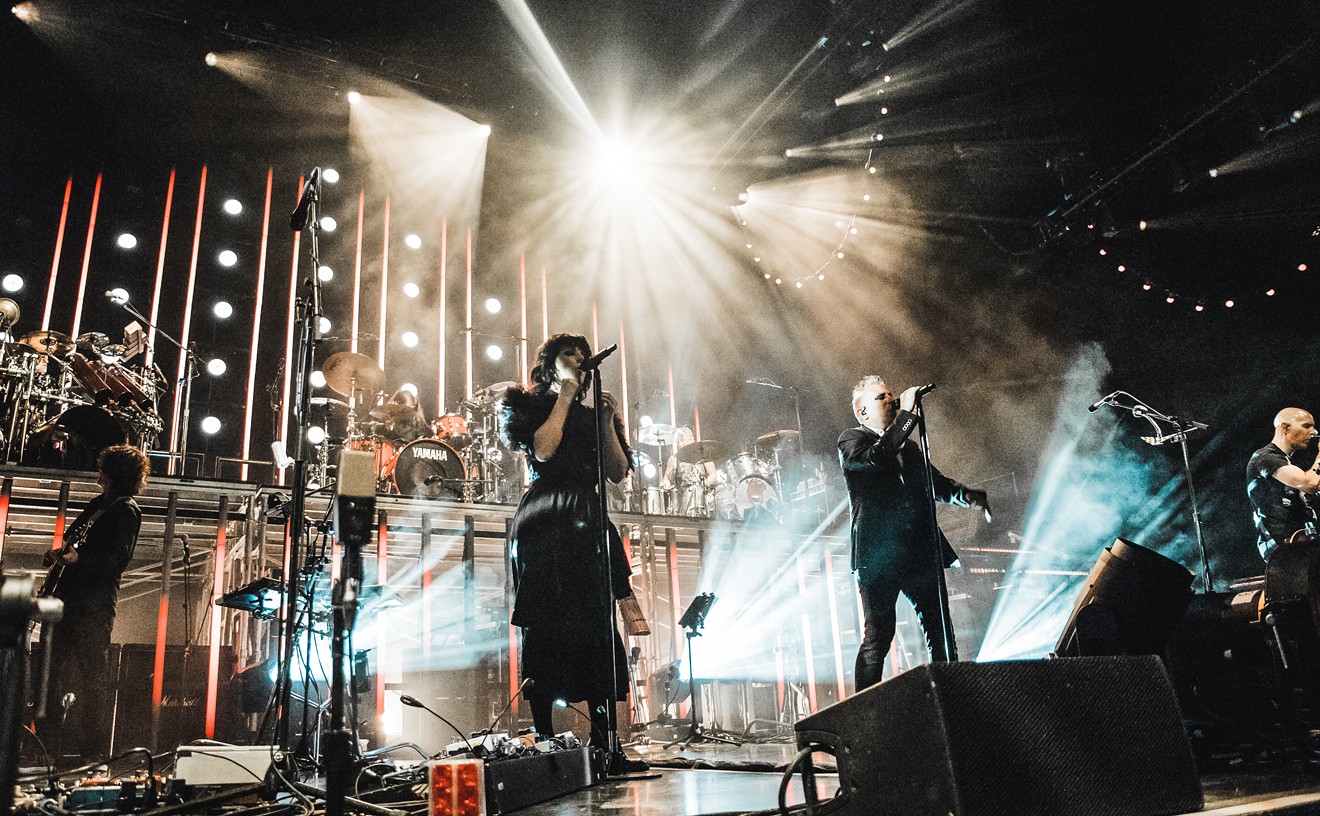R.L.'s Blues Palace #2 occupies a lot at the corner of Grand Avenue and Meadow Street a few blocks southwest of Fair Park. For a quarter of a century, the revered South Dallas nightclub has survived zoning battles, crippling recessions and bouts of media and pop fascination with the blues. And as plenty of venues, bands and "next big things" have flashed and fizzled in the world surrounding R.L.'s, the business plan and revue at the Blues Palace have remained relatively unchanged since owner, manager and "Right Reverend of the Blues" R.L. Griffin opened his first club, Blues Alley, across the street in 1985.
Griffin only slapped his initials on the club after a like-named, well-established Washington, D.C., jazz and supper club took exception.
For decades now, on Friday, Saturday and Sunday evenings, faithful followers, curious observers, up-and-coming players and performers (as well as out-of-town record biz types) have flocked to Griffin's South Dallas juke joints to join his congregation as The Blues Palace Show Band delivers a soul-stirring mix of contemporary and traditional blues, soul and R&B.
In the early '90s, Bill Minutaglio, former Dallas Morning News staff writer, rightfully embellished Griffin's Right Reverend nickname, describing him as the "high holy priest of blues in Dallas," and writing that Griffin's original Blues Palace was "maybe the longest-running, pure R&B palace in recent city history." But Minutaglio wrote mostly of Griffin's old Palace. Today, R.L.'s Blues Palace #2 dwarfs the original location that still stands across Meadow Street. Burgeoning crowds forced Griffin to the new spot at some point in the late '90s.
After a slump in business in the early 2000s, Griffin says Blues Palace #2 is once again doing well. Sure enough, last year, as a banner near the club's entrance proudly proclaims, the Blues Palace won the Juke Joint Award for "Best Blues Club in America" from the Memphis-based Jus' Blues Music Foundation at its 10th annual Jus' Blues Music Awards.
"It's taken a good six years to get things back to where they need to be," he says, as his seven-member band slowly makes its way to the stage for a Friday night performance. "Thankfully, lately, we're seeing more and more people turn up."
Not long after The Blues Palace Show Band starts jamming, throngs of men and women leave their seats to head to the soon-to-be crowded dance floor. Others simply watch the band from their seats, sipping on bottles of beer and mixed drinks from foam cups.
At a table near the stage, Broderick Lamonze Eggins is visibly digging the band's performance, grooving and air-drumming along. Eggins, 27, started drumming more than 16 years ago. He later studied the craft at Grambling State University, where he performed in the school's renowned marching band. Back in July, he was hired to play drums for Fort Worth performer Jr. Wright's Suave Show Band. Eggins' audition impressed Wright — he hired him immediately — but, in advance of the new drummer's first gig with the group, Wright insisted Eggins see a show at R.L.'s.
"He wants me to get a feel for the style and environment," Eggins says, his eyes fixed on the stage.
Griffin, born 70 years ago in Kilgore though he hardly looks it, has now been performing in the region for more than 45 years, only moving to Dallas in 1965 when Big Bo Thomas offered him a gig performing with his band Big Bo & The Arrows at a spot called The Empire Room. After about eight years of headlining for Big Bo, Griffin formed his own group, and was soon managed by Showco Productions, a Dallas sound and lighting company that also managed Little Gary Ferguson and Freddie King, "The Texas Cannonball." Soon, Griffin's band started playing at other clubs like Kenneth's Place, Louann's and The Red Jacket. But it was only after a seven-year regular gig at The Climax Club in Tyler that Griffin first had the idea of opening his own place.
Since making that decision, R.L.'s South Dallas stage has earned quite the national reputation, hosting many notable area and road acts, including Z.Z. Hill, Buddy Ace, Johnnie Taylor, Little Johnny Taylor, Little Milton, Bobby "Blue" Bland, Bobby Rush and Denise LaSalle. But it was the club's regular Saturday night revue that led to KKDA-AM 730 Soul 73 broadcasting live from the Blues Palace each weekend. The radio show's popularity eventually landed Griffin a DJ gig, too, where he works the 7 to 10 p.m. weekday shift on the station. For the past decade, he's played classic blues, soul and R&B tunes while delivering three hours of entertaining DJ banter and storytelling. And, without fail, he mentions his Blues Palace each time, inviting listeners to join "his family" at the club on the weekend.
"I first met R.L. down at the Classic Club, back before he had his own club," says Don Ottensman, KNON-FM 89.3's blues format director, who as "Don O" has DJed the competing station's Friday night blues show since 1983. "I've seen dozen and dozens of national road acts, a lot of really great shows at R.L.'s. When visitors come into town, that's where I take them because it's a major cultural, musical experience."
On most nights, The Right Reverend stays near the back of the club for the bulk of the show, his voice only occasionally breaking in over the P.A. system to comment or to announce the next singer. These days, he's all too pleased to rotate through several vocalists before he takes the stage at end of the night.
This past Friday night, as Sammy Riley delivers a solid, crowd-impressing performance, is no different. The 46-year-old Riley only recently started performing solo at R.L.'s, but he estimates that he's been attending shows here for half his life.
Soon after Riley's performance comes another — this one damn near unforgettable — from a regular Blues Palace performer by the name of Big Charles Young. He's a favorite among frequent attendees of the club and the in-the-know locals. He's been hanging out at R.L.'s since 1987, but like Riley, he didn't start out on stage.
"I used to be the door man, the cameraman, the bouncer," he says, pausing to laugh. "I did it all and a little bit of everything else. After listening to so many other people sing, I knew I could do it. I knew I could beat 'em."
Now everyone else at R.L.'s knows so too. But that's an old story at the Blues Palace, where Griffin, much to his credit, is all too pleased to let such newcomers to the craft share — or, hell, steal — the spotlight.
"If you have some talent, then he'll let you display it," says Big Charles. "R.L.'s not a selfish person. He'd rather let you get up there and take a turn."
Even as the crowds have waxed and waned and waxed again over the years, it's this supportive, familial feel that has remained a constant at this Dallas institution. It's what has always, and will always, keep people coming back to R.L.'s.
"He's done so much to help so many performers in the town," Ottensman says of Griffin before pausing a few seconds to mull his statement over.
Finally, he settles on the appropriate sentiment: "We're lucky to have him."










